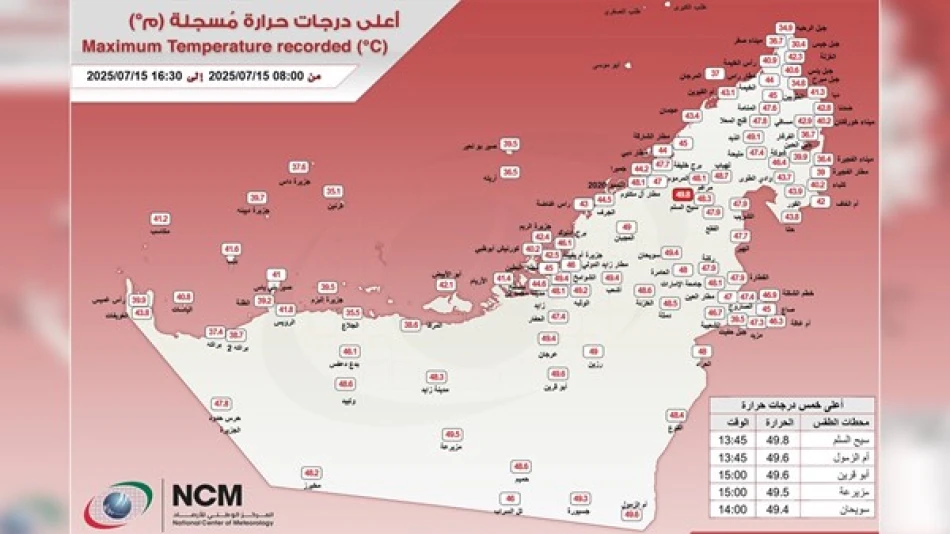
UAE Sizzles: Meteorology Authority Reveals Record-Breaking Temperature
UAE Records Scorching 49.8°C as Gulf Region Faces Intensifying Heat Crisis
The United Arab Emirates recorded a blistering temperature of 49.8°C (121.6°F) on Tuesday, marking another extreme heat milestone that underscores the Gulf region's growing vulnerability to climate change and poses significant challenges for the nation's ambitious economic diversification plans.
Record-Breaking Heat Hits Dubai's Outskirts
The UAE's National Center of Meteorology reported that the peak temperature was recorded at 1:45 PM local time in Saih Al Salam, a desert area in Dubai's southeastern region. This reading places the Emirates dangerously close to the 50°C threshold that meteorologists consider a critical benchmark for extreme heat events.
Saih Al Salam, located in Dubai's interior desert landscape, has become a frequent hotspot for temperature records due to its distance from coastal moderating influences and its position in the Arabian Peninsula's heat-absorbing sand terrain.
Regional Context: A Pattern of Escalating Extremes
This latest temperature spike fits into a broader pattern of intensifying heat across the Middle East. The region has experienced increasingly frequent temperature readings above 48°C in recent years, with neighboring countries like Kuwait and Iraq regularly recording similar extremes during summer months.
The timing is particularly significant as it occurs during the traditional peak summer season when Gulf states typically see their highest temperatures. However, the consistency of near-50°C readings suggests a new normal that could have far-reaching implications for the region's habitability and economic planning.
Economic Implications for the UAE's Vision 2071
Energy Infrastructure Under Pressure
Such extreme temperatures place enormous strain on the UAE's electrical grid, with air conditioning demand reaching peak levels that test the country's power generation capacity. This directly impacts the nation's energy transition goals and renewable energy investments, as solar panel efficiency actually decreases in extreme heat despite abundant sunshine.
Tourism and Outdoor Economy Challenges
The UAE's tourism sector, a cornerstone of economic diversification, faces mounting pressure from these heat extremes. Outdoor attractions, construction projects, and even airport operations become increasingly difficult to manage when temperatures approach 50°C, potentially affecting the country's competitiveness as a global business and leisure destination.
Comparative Global Perspective
While the UAE's 49.8°C reading is extreme, it remains below the world's highest reliably recorded temperatures. Death Valley, California holds the global record at 54.4°C, while recent years have seen similar readings in parts of Pakistan, Iran, and other Middle Eastern nations.
However, what makes the UAE's situation particularly concerning is the combination of extreme heat with high humidity in coastal areas, creating heat index values that can feel significantly hotter than the actual air temperature. This differs from the dry heat experienced in places like Death Valley or the Sahara Desert.
Climate Adaptation Strategies
The UAE has positioned itself as a leader in climate adaptation technology, investing heavily in cloud seeding programs, urban cooling initiatives, and sustainable architecture. The country's hosting of COP28 climate summit has further emphasized its commitment to addressing climate challenges while maintaining economic growth.
These temperature records serve as real-time validation of the urgent need for such investments. The UAE's ability to maintain its economic momentum while adapting to increasingly extreme heat will likely serve as a model for other Gulf states facing similar challenges.
As the region continues to experience these temperature extremes, the UAE's response will be closely watched by international investors, climate scientists, and policymakers seeking solutions for heat adaptation in arid climates worldwide.
Most Viewed News

 Layla Al Mansoori
Layla Al Mansoori






